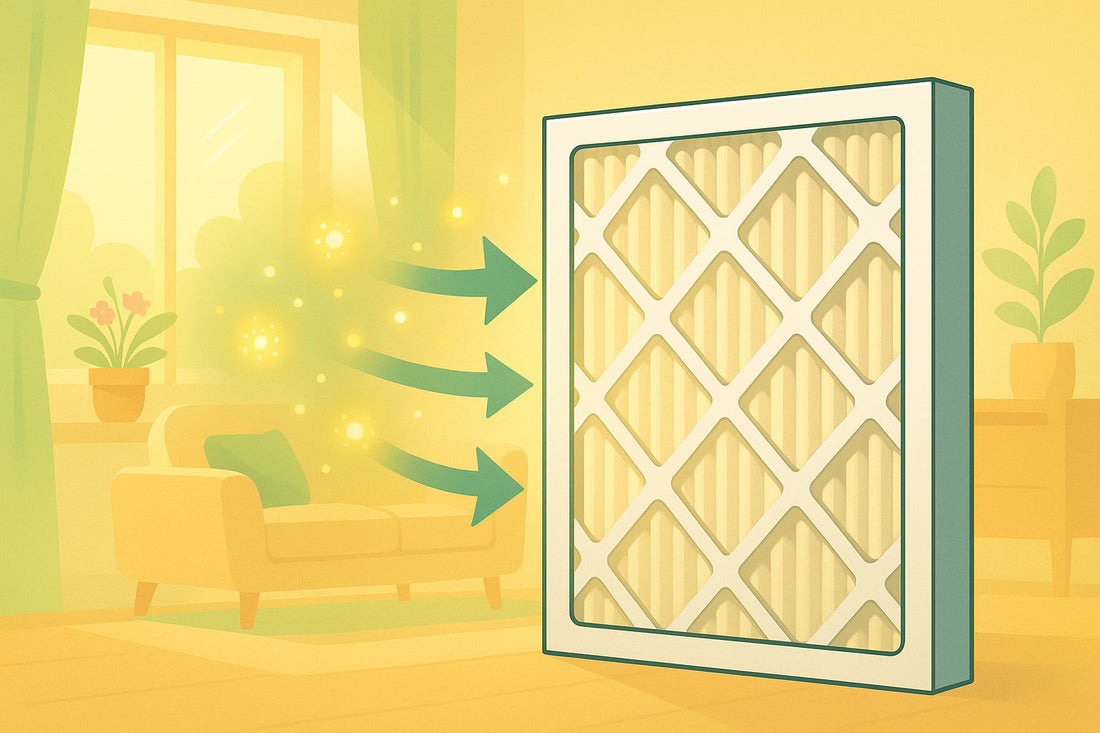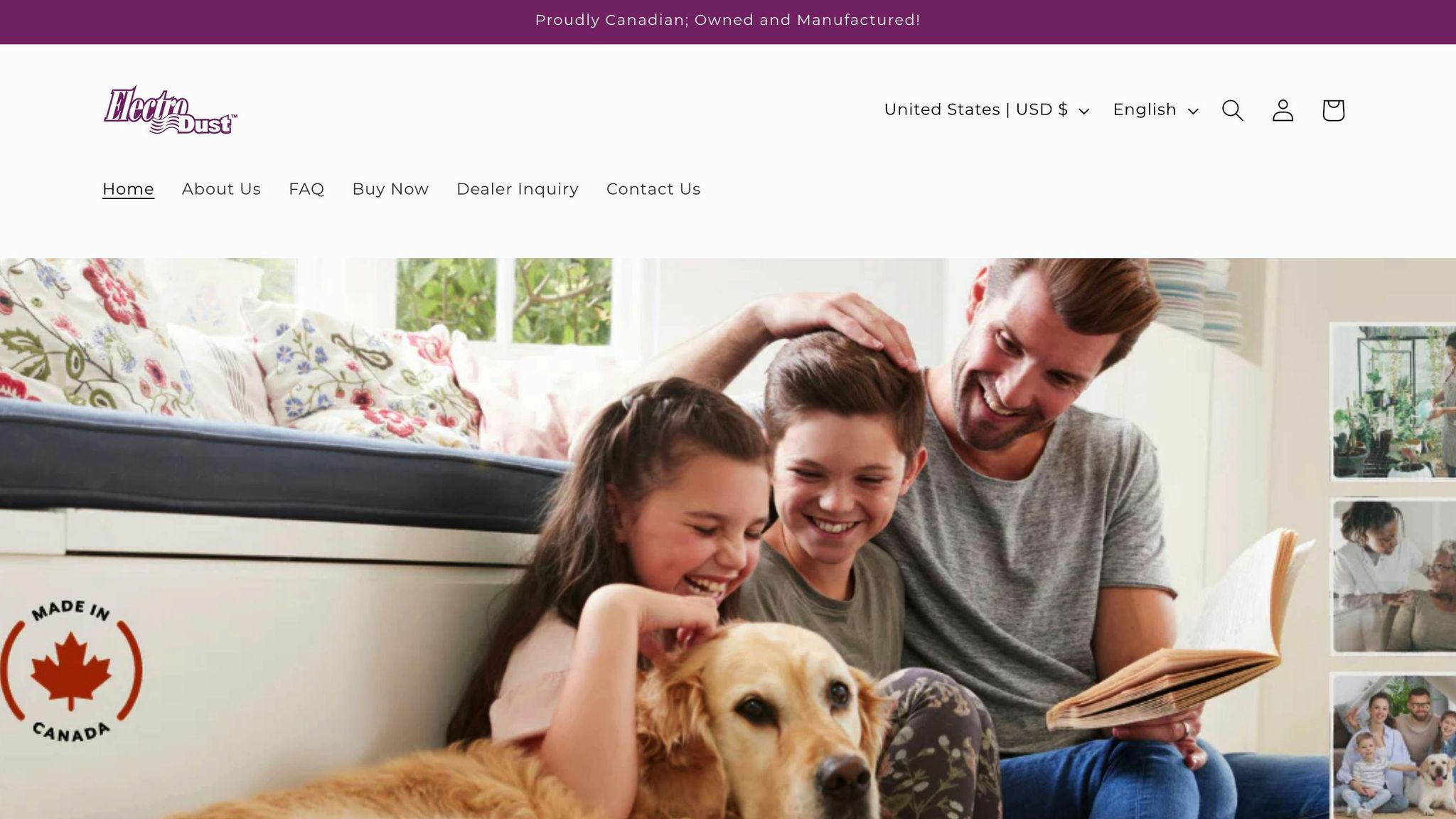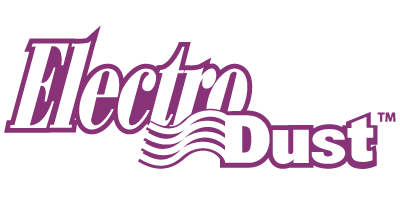
How Your Furnace Filters can help with your spring allergies
Partager
Spring allergies making you miserable? Your furnace filter can help. By trapping allergens like pollen, dust mites, and pet dander, a high-quality furnace filter improves indoor air quality and reduces allergy symptoms. Here's how:
- Choose the right filter: Opt for a reusable filter with a MERV rating of 7–12 for effective allergen capture.
- Maintain regularly: Clean or replace your filter every 1–3 months, especially during high-pollen seasons.
- Save money and reduce waste: Reusable filters last years, cutting down on costs and landfill waste.
- Boost HVAC efficiency: A clean filter keeps airflow steady and energy bills lower.
Switch to reusable filters like ElectroDust for long-term savings, eco-friendliness, and better air quality. Keep your home allergen-free this spring with proper filter care.
Why Choose Reusable Furnace Filters for Allergies
How Filters Capture Allergens
Reusable furnace filters use a multi-layer design to trap airborne allergens as particles clump together during airflow. These filters can capture up to 96.5% of particles and hold as much as 165 grams of dust and allergens. This helps reduce common irritants like pollen, pet dander, and dust mites in your home. By improving air quality, these filters also bring added benefits like cost savings and less waste.
Save Money and Cut Down on Waste
Switching to reusable filters can save you money and reduce environmental impact. Unlike disposable filters that need replacing every 1–3 months, reusable filters can last for years with proper care, potentially saving homeowners hundreds of dollars over time. Plus, using reusable filters helps cut down on the waste created by disposable options, which contribute to resource depletion.
Long-Lasting Performance
With regular maintenance, reusable filters stay effective over the long term. Some even come with features like an "air alarm" to alert you when it's time for cleaning. Their anti-microbial properties also help tackle organic contaminants like dust mites and fungi, further improving indoor air quality. Choosing the right reusable filter and keeping it clean ensures these benefits last for years.
Picking the Right Reusable Filter
MERV Ratings and Filter Strength
MERV ratings play a key role in managing spring allergies. These ratings, which range from 1 to 20, indicate how well a filter captures smaller particles. The higher the MERV rating, the better the filtration. For most homes dealing with seasonal allergies, a MERV 7-8 filter strikes a good balance between capturing allergens and maintaining system efficiency.
A MERV 7 filter is designed to trap:
- 50% of particles sized 3.0–10.0 microns
- Common allergens suited to this level of filtration
- Larger airborne particles
"Air inside your home can be two to five times more polluted than the air outside", according to ASHRAE guidelines.
Next, let’s look at how filter materials and designs impact performance.
Filter Designs and Materials
The material and design of a filter are just as important as its MERV rating. ElectroDust’s electrostatic filters, for example, use materials that generate a static charge to attract allergens. This makes them especially effective during spring when pollen levels are high. These filters are washable, retaining their electrostatic properties through multiple cleanings, which ensures consistent performance throughout allergy season.
| Filter Type | Particle Capture Rate | Best For |
|---|---|---|
| Electrostatic | Up to 95% | Pollen, pet dander, dust |
| Pleated | 80–95% | General allergens |
| Fiberglass | ~25% | Basic filtration |
Getting the Right Size Filter
Choosing the correct size filter is crucial to prevent air leaks that allow allergens to bypass filtration. To find the right size, measure the length, width, and thickness of your current filter (in inches). Round each measurement down to the nearest whole number and ensure these dimensions align with your HVAC system’s requirements.
A properly sized filter creates an airtight seal, ensuring all air passes through the filter. This not only maximizes allergen capture but also helps your HVAC system run efficiently during peak allergy season. Always double-check that your filter dimensions match your system specifications for the best results.
Cleaning and Care for Reusable Filters
Taking care of your reusable filter helps it last longer and keeps your air clean - especially during allergy season.
When to Clean Your Filter
Check your reusable filter every 1–3 months. If allergies are a concern in your home, you may need to clean it more often. Setting reminders during high-pollen periods ensures your filter is doing its job. ElectroDust recommends cleaning your filter every month for maximum efficiency.
"A good rule of thumb is to check your reusable filter every 1-3 months, and if it looks dirty, it's time for a cleanup." - Dolphin Cooling & Heating
Step-by-Step Filter Cleaning Guide
Here’s how to clean your filter:
- Turn off the furnace: Safety first - always turn off the system before removing the filter.
- Remove the filter: Note the orientation so you can reinstall it correctly.
-
Vacuum the filter: Vacuum both sides.
- Rinse with water: Use plain water to clean the filter. Avoid harsh chemicals.
- Air-dry completely: Make sure the filter is fully dry before putting it back.
Once dry, inspect the filter for any damage before reinstalling it.
Checking for Filter Damage
Regular checks help you catch issues that might reduce the filter’s ability to trap allergens. After cleaning, look for the following:
| Damage Type | What to Look For | Action Needed |
|---|---|---|
| Physical Damage | Tears, holes, bent frame | Replace the filter |
| Performance Issues | Poor airflow, excess dust | Deep clean or replace |
| Material Wear | Frayed or worn-out mesh | Plan to replace soon |
Red flags to watch for:
- More dust around your home than usual
- Higher energy bills (could mean airflow problems)
- Visible damage to the filter
- Reduced filtering efficiency
Conclusion: Better Air Quality During Allergy Season
Key Points About Allergy Relief
Reusable furnace filters are an effective way to combat spring allergies while offering long-term savings for homeowners. With a MERV 7 rating, these filters are designed to trap dust mites, pollen, pet dander, and mold spores using a four-stage filtration process. The combination of antimicrobial-treated woven polymer screens and non-woven synthetic fiber cells ensures cleaner indoor air, helping to create a healthier home environment.
Proper maintenance of reusable filters can also help lower energy costs by as much as 15%, all while maintaining peak filtration performance. Sticking to a regular cleaning routine during allergy season ensures the filter continues to trap irritating particles, keeping your home's air fresh and clean.
Why Choose ElectroDust Reusable Filters?

ElectroDust takes these benefits a step further with their specialized reusable filters. With over 30 years of experience, the company has earned a 4.6/5 rating from 84 verified reviews, all while preventing more than 10,000 disposable filters from ending up in landfills.
ElectroDust filters come with a great warranty and customizable sizing, making them a perfect fit for virtually any furnace system. Priced at $129.99, these filters quickly pay for themselves through reduced replacement costs and improved energy efficiency. Their durable design and straightforward upkeep make them an excellent option for tackling spring allergies while also reducing environmental waste.
| Benefit | Impact |
|---|---|
| Air Quality | Traps dust mites, pollen, pet dander, and mold spores |
| Cost Savings | Eliminates the need for frequent filter replacements |
| Environmental Impact | Keeps thousands of disposable filters out of landfills |
| Energy Efficiency | Cuts energy use by up to 15% when cleaned regularly |
By regularly cleaning or maintaining your reusable filter, you ensure proper airflow and keep your system running efficiently. This not only helps you save money on energy but also extends the lifespan of your HVAC system. It's a simple, eco-friendly way to improve both your home's air quality and energy efficiency.
